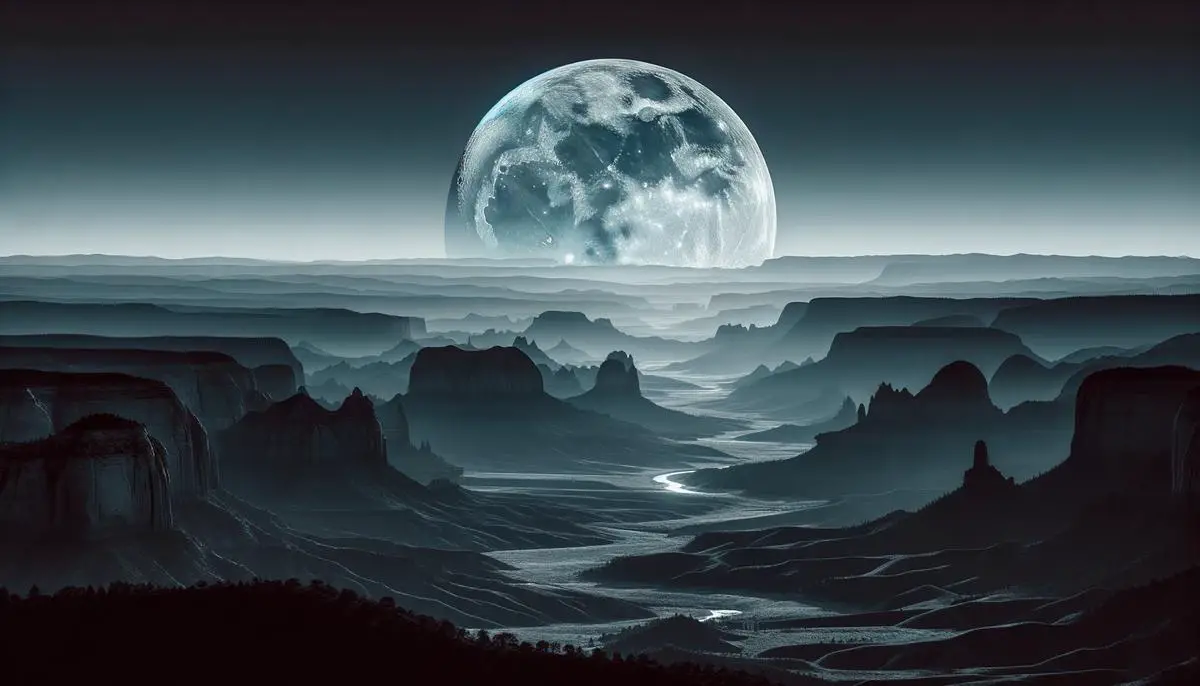The movement of the Moon across our sky is a fascinating process influenced by its orbit around Earth and Earth's own rotation. This celestial interaction affects where and when we see the Moon rise and set, introducing a unique pattern that changes throughout the month. Understanding this pattern requires an exploration of the forces at play between our planet and its natural satellite.
Factors Influencing Moonrise Direction
The path of the Moon across the sky, specifically the direction from which it rises and sets, is dictated by the orbital dance between Earth and the Moon. As Earth spins on its axis, celestial entities such as the Sun and Moon appear to journey across our sky, rising in the east and setting in the west due to our perspective from the planet's surface.1 The Moon's orbit around Earth introduces complexity to this East-West trajectory. This orbital motion, combined with Earth's rotation, causes the moonrise and moonset positions to vary over the course of a month.
This variance in the moon's rising and setting direction is due to the tilt of Earth's axis and the slightly inclined plane of the Moon's orbit around Earth. The Moon traverses through the sky eastward at a rate slower than the casual observer might notice – migrating approximately 12 to 13 degrees each day.2 This is due to its synchronous rotation around Earth in about one month's time. As a result, we typically observe the Moon rising later each day by about 50 minutes. The specific phase of the Moon within its synodic cycle greatly influences not only the time but also the exact location on the horizon where it will appear to rise or set from our vantage point on Earth's surface.

Practical Guide to Observing Moonrise
Predicting the moonrise direction requires considering the moon's continuous orbit around Earth, which dictates where and when this natural satellite will appear in the sky. The moon's orbit is tilted 5.1 degrees relative to Earth's orbital plane around the sun.3 This slight tilt introduces significant variability in the moonrise and moonset direction, especially over the span of a lunar month.
The phase of the moon on any given day offers a clue towards predicting its direction of emergence.
- Around the time of the new moon, when Earth is positioned between the sun and the moon, the moon closely follows the sun's path and rises in the eastern sky.
- As the phases progress to a full moon, the moon rises roughly from the eastern direction at sunset, moves across the sky during the night, and sets in the west at sunrise.
By considering the ongoing lunar phase and its visual presence in the sky, one can forecast its forthcoming rise direction with reasonable accuracy.

By observing the Moon's behavior in the sky, we gain insight into the intricate dance it performs with Earth. The ability to predict its rising and setting direction enriches our connection to the night sky, offering a glimpse into the dynamic relationship shared by celestial bodies. As we continue to watch and learn from these patterns, we not only enhance our appreciation for astronomy but also deepen our understanding of the universe's remarkable complexity.
- Karttunen H, Kröger P, Oja H, Poutanen M, Donner KJ. Fundamental Astronomy. 5th ed. Springer; 2007.
- Chaisson E, McMillan S. Astronomy Today. 9th ed. Pearson; 2017.
- Freedman RA, Kaufmann WJ. Universe. 10th ed. W. H. Freeman; 2014.
![]()
